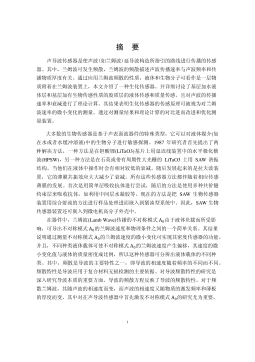基于载荷强化和损伤的疲劳累积损伤理论研究
摘要疲劳失效一直是工程技术人员十分关注的问题之一,疲劳累积损伤理论主要是研究疲劳载荷作用下疲劳损伤的累积规律和疲劳破坏准则,它是工程结构和零件的疲劳寿命合理、准确预测的重要工具。工程结构和零件(特别是汽车零部件)在实际工作时,大部分载荷是疲劳极限以下的小载荷,但这些小载荷在疲劳累积损伤理论的作用和地位一直没有得到很好的解决。本文在上海市政府间国际科技合作项目和上海自然科学基金的支持下对基于载荷强化和损伤的疲劳累积损伤理论进行了深入的研究。主要内容包括:1、对现有的疲劳累积损伤模型进行分析,这些模型过多的着重考虑载荷的损伤,很少考虑疲劳极限以下小载荷的强化作用。结果将导致预测结果远低于载荷谱中含...
相关推荐
-
10KV电网D-SCADA 系统信息采集与故障诊断研究与设计VIP免费

 2024-10-14 53
2024-10-14 53 -
方形吸顶散流器平送风等温射流特性研究VIP免费

 2025-01-09 13
2025-01-09 13 -
关于充液声导波传感器中频散兰姆波的研究VIP免费

 2025-01-09 22
2025-01-09 22 -
结合梁斜拉桥施工过程中考虑剪力滞影响的分析方法VIP免费

 2025-01-09 30
2025-01-09 30 -
空调房间热舒适性的数值模拟与实验研究VIP免费

 2025-01-09 10
2025-01-09 10 -
汽车前轮线控转向系统研究VIP免费

 2025-01-09 19
2025-01-09 19 -
输入分配型混合动力车辆动力系统控制策略研究VIP免费

 2025-01-09 9
2025-01-09 9 -
双馈风力发电系统的柔性并网控制研VIP免费

 2025-01-09 38
2025-01-09 38 -
污水处理厂污泥好氧堆肥发酵技术的试验研究VIP免费

 2025-01-09 11
2025-01-09 11 -
应用风室试验装置的风机性能VIP免费

 2025-01-09 13
2025-01-09 13
相关内容
-

汽车前轮线控转向系统研究
分类:高等教育资料
时间:2025-01-09
标签:无
格式:PDF
价格:15 积分
-

输入分配型混合动力车辆动力系统控制策略研究
分类:高等教育资料
时间:2025-01-09
标签:无
格式:PDF
价格:15 积分
-

双馈风力发电系统的柔性并网控制研
分类:高等教育资料
时间:2025-01-09
标签:无
格式:PDF
价格:15 积分
-

污水处理厂污泥好氧堆肥发酵技术的试验研究
分类:高等教育资料
时间:2025-01-09
标签:无
格式:PDF
价格:15 积分
-

应用风室试验装置的风机性能
分类:高等教育资料
时间:2025-01-09
标签:无
格式:PDF
价格:15 积分






